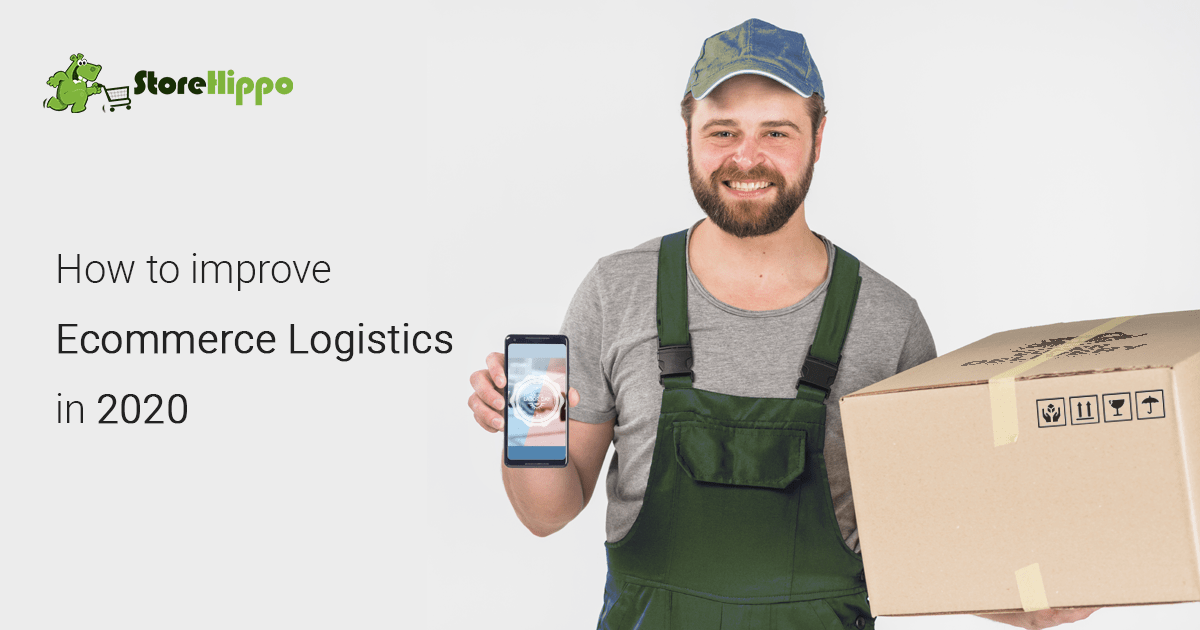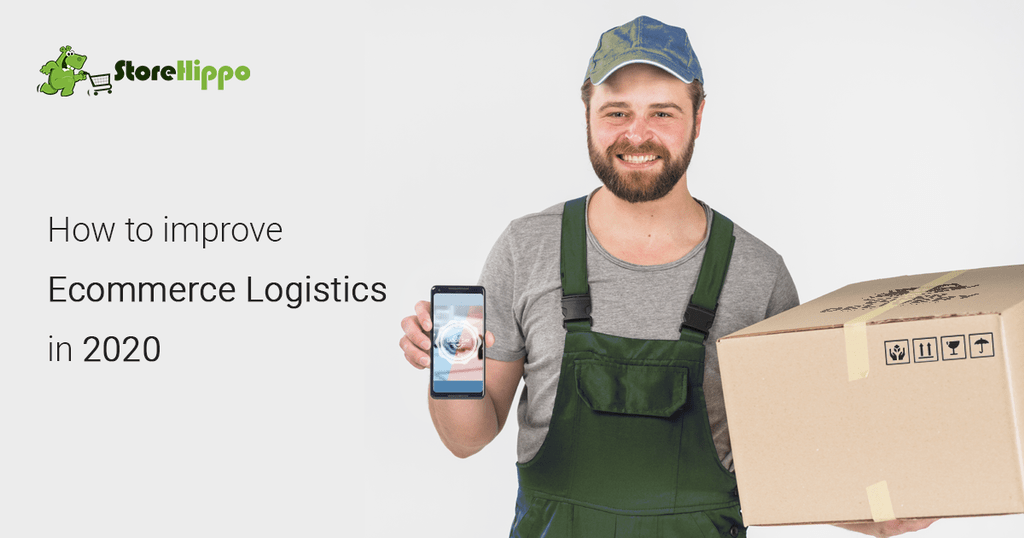Online market is booming: this is an understatement. As per Forbes, the e-commerce industry could grow to become worth $6.7 trillion by 2020. Big players like Amazon are already treadmilling to be number 1 in its niche and several others are joining the race day by day. With more players entering this space, you may notice emerging trends that affect the logistics and the entire shipping process.
‘But I do not hold a chance’, you might say if you are only just a start-up. Well, these below rules apply to every e-retailer (big or small) who want to expand and excel in business. Keep these 20 rules handy while planning your supply chain strategy for 2020 and see your business steering towards growth.
Table of Contents
- 20 Rules to keep in mind while laying out logistics strategy
- 1. Nail down the fact: Supply chain is important
- 2. Break the myth: My internal team will suffice
- 3. Call for many: Partner multiple carriers
- 4. Go green: Look for sustainable options
- 5. Think backwards: Manage returns efficiently
- 6. Know it all: Real-time tracking
- 7. Optimizing cost: Product Packaging
- 8. Optimizing cost: Automation
- 9. Do it smart: Bulk order uploads
- 10. On-time: Scheduling pick-ups
- 11. Do it quicker: Auto sync orders
- 12. Happy Faces: Partial fulfilment
- 13. Ease of payment: COD support
- 14. Ensure customer satisfaction: Automated logistics management
- 15. Provide free-shipping, deals and offers by cost optimization
- 16. Be Transparent: List down your policies
- 17. They are the King: Excellent customer support
- 18. Optimize Inventory
- 19. Compliment your logistics strategy: StoreHippo
- 20. Reliable shipping aggregator platform: ShipKaro
- Wrapping up
20 Rules to keep in mind while laying out logistics strategy
1. Nail down the fact: Supply chain is important
Within the realm of the e-commerce world, this is a universal fact: Implementing seamless logistics is one of the most crucial elements to cope up with customer demands and outperforming competitors. Irrespective of the size of your business, you will want to expand it on a regional or global level. Whatever your business location or industry, organized shipping helps you cut on the costs and time to ship products to your customers or move them from one location to another.
2. Break the myth: My internal team will suffice
You need an expert hand to deal with order management, packaging, shipping, returns and more. While your internal team may be capable to deliver products to customers, logistics has a broader definition. The many challenges associated with supply chain management need a third-party courier partner to deal with it. The benefits that accompany resourced carriers will pay off in several ways in the long run; one of them being you able to focus on your core business.
3. Call for many: Partner multiple carriers
A single carrier may not be the most effective strategy for handling shipments as your business expands and volume grows. With multiple carriers, you can compare rates, routes and delivery options. You also get the power of negotiation which is not possible while dealing with just one e-commerce courier service partner. Multiple fulfilment partners also mean you have the ability to accommodate customer requests like scheduled delivery, quick delivery, payment acceptance in cash, etc. Not only this, but well-established carriers also provide you flexibility on returns.
4. Go green: Look for sustainable options
Opting for sustainable options for shipping is concerned with reducing negative environmental impact. You can restructure sourcing/ distribution systems and manage reverse flow to eliminate inefficiencies. For instance, one aspect of logistics is to deal with the packaging of items to be shipped. Nowadays, most e-retailers are using biodegradable materials for packaging which are sturdy and effective at the same time. When packaging is done correctly, products reach customers in good condition and chances of returns are reduced. This leads to the saving of important resources such as transport and time.
5. Think backwards: Manage returns efficiently
As a business owner, while you give importance to the forward supply of goods, you should take return orders seriously too. Return of items can be an added burden on your e-commerce courier service if you do not lay down the right strategic approach towards managing it. Most of the tips and tactics for the forward flow of products also remain true for returns. A little consciousness there, and you can ace it in no time.
6. Know it all: Real-time tracking
Real-time tracking enables you to exactly know the location of the product once it has left your warehouse. This helps both – your supply chain team as well as your customer. As a business owner, this facility helps you increase logistics efficiency, identify en-route delays and its reasons and lets you improve on-time performance. At the same time, by providing increased transparency, customers can know the status of their product and know when will the gratification be realized.
7. Optimizing cost: Product Packaging
Choosing the packaging of your products wisely can reduce costs significantly. You might want to check with your carrier the availability of different sizes, shapes and materials of boxes depending upon what you are shipping. When your e-commerce courier service partner packs products in accordance with their sizes, it reduces the weight and occupy lesser storage space in your inventory and also during transport.
8. Optimizing cost: Automation
When your supply chain’s internal processes such as labelling, uploading orders etc. are managed automatically, this becomes a boon. Lesser manual intervention means lesser chances or errors and therefore reduced reasons for returns. It also means fewer paychecks to be signed at the end of the month.
9. Do it smart: Bulk order uploads
Imagine there is a manual labour force sitting at the backend and uploading every single order for shipment. This logistics team does double shifts during promotions, offers and festivals. As against this, you can upload all orders together at one go. How does that sound? Automating your supply chain can enable bulk order uploads helping you save time to invest in making greater business decisions.
10. On-time: Scheduling pick-ups
When you opt for scheduled pick-ups, you tend to decrease administration efforts for yourself and the carrier. With lesser waiting, mishaps and delays, you can establish efficient mutual communication channels and focus to increase planning accuracy and resource efficiency. When pick-ups are scheduled, internal logistics processes become more flexible and you can easily manage business-related constraints.
11. Do it quicker: Auto sync orders
When you have all your orders synced automatically for shipping without manual intervention, shipping management becomes swift and easy. This way you can easily pull your orders from wherever you are selling and get them shipped in a few clicks.
12. Happy Faces: Partial fulfilment
When customers demand urgent orders or faster deliveries on certain items from their cart, you need to ensure that your e-commerce courier service provider offers the facility of partial fulfilment of orders. Urgent orders may need quicker deliveries and prompt attention, while other items of the cart can go as per the pick-ups, scheduled.
13. Ease of payment: COD support
Often, customers are more comfortable to make a payment in the form of cash. This is likely to happen when orders are flowing from smaller towns and cities. To reap the benefits of this segment of customers, make sure to incorporate the COD support cycle as part of your supply chain.
14. Ensure customer satisfaction: Automated logistics management
While planning the supply chain strategy, most business owners miss out to consider customer satisfaction as an important aspect. You might not want to overlook this factor. All the contrary, make it your unique selling proposition. One way to ensure this is faster deliveries through automated management of supply chain functions. This lets you import orders, customize shipping rates and generate shipping labels for efficient time management.
15. Provide free-shipping, deals and offers by cost optimization
Any day, anybody will be attracted to deals and offers, especially that announces ‘free shipping’. Of course, your logistics plan would be providing this option on the purchase of a certain amount. But even then, your supply chain can sustain ‘free-shipping’ only if it cuts corners through sensible packaging, automating and reducing overheads. This is just a candy to attract customers, while in reality, there is nothing like ‘free shipping’. After all, as a business owner will have to incur that expense.
16. Be Transparent: List down your policies
When you transparently list down the terms and conditions of your supply chain policies, it builds trust amongst your customers. They will know exactly what to expect from your e-commerce courier service. Interestingly, the majority of customers read company policies first before ordering. This is even more true for return logistics.
17. They are the King: Excellent customer support
The supply chain definition is not limited to delivering of products only. Once the item reached the customer everything is not done and dusted. In fact, customers might want to return the products, they may have certain post-purchase queries or want to inquire further. Providing good customer support is one step closer to a winning logistics strategy.
18. Optimize Inventory
Whatever your retail category, there will be ups and downs in business. There will be periods of high sales and times when things will move rather slow. In either case, you will need an accurate measure of inventory in stock. You might also want to ensure that this is maintained so that all orders are fulfilled at their promised time. A reliable fulfilment carrier can help you optimize your inventory round the year.
19. Compliment your logistics strategy: StoreHippo
The website you built to sell your items should complement your fulfilment strategy. It shouldn’t be lacking essential opt-in features that most customers come looking for. For instance, scheduling place of delivery or opting for cash payment. Not building a website in sync with your supply chain plan can do you no good. StoreHippo offers a more integrated solution to build a website of your dreams.
20. Reliable shipping aggregator platform: ShipKaro
StoreHippo’s shipping aggregator platform, ShipKaro offers all the tools and features that will build your logistics chain future-ready. Equip your supply chain with the power of automation while comparing rates and settling for the best of regional and global carriers to cater to your needs. With ShipKaro, you have logistics at its best.
Wrapping up
Surely, the upcoming year will lead you into thinking new strategies and fresh approaches to tackle the challenges of your online business. Considering this, a fully-featured e-commerce platform can help you with the above mentioned solutions. Relying on StoreHippo means you can rest assured to get good e-commerce courier service rates and a fully automated fulfilment strategy through its logistics aggregator platform ShipKaro. With these two important aspects taken care of, you can channelise your efforts to improvise other more important aspects of shipping, i.e. customer satisfaction.
Want to roll out an improved logistics strategy in 2020? Visit us today and book a free demo or start a 14 days free trial period!























Leave A Comment